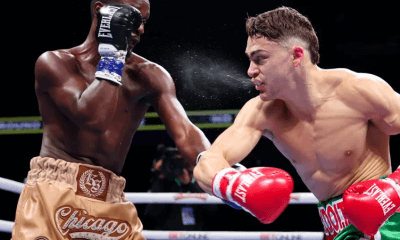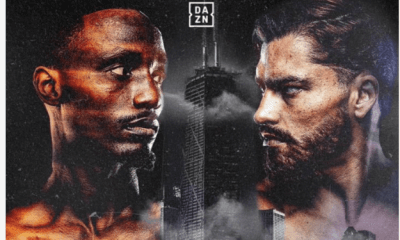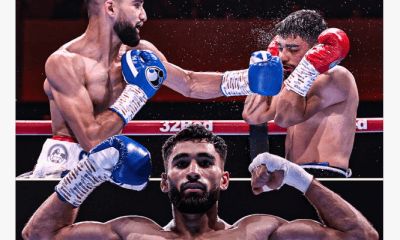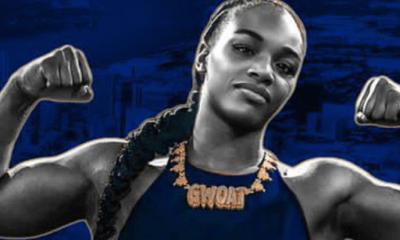Featured Articles
Avila Perspective, Chap. 109: Lopez vs. Loma and More
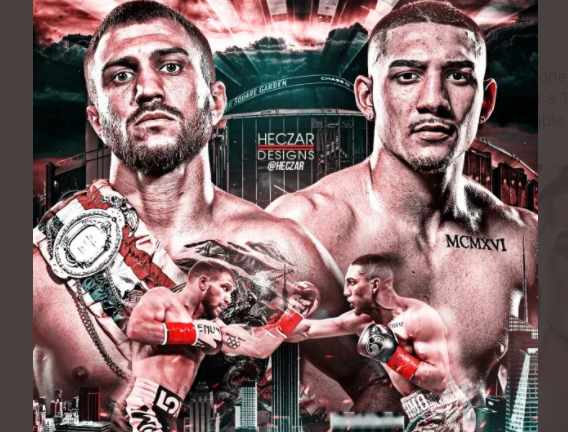
Avila Perspective, Chap. 109: Lopez vs. Loma and More
Its LatinX versus “High Tech,” it’s Brooklyn versus Oxnard and its’ a clash between brash and cool.
So, who is going to win?
Twenty-three year old Teofimo Lopez (15-0, 12 KOs) and 32-year-old Vasyl Lomachenko (14-1, 10 KOs) meet for the WBA, IBF and WBO lightweight titles on Saturday Oct. 17, at the MGM Grand Bubble in Las Vegas. ESPN will televise.
Fans will not be allowed.
Since 2013, Lomachenko, the amateur superstar turned professional star, has needed a signature win that will elevate him to a box office attraction. It’s the one accomplishment remaining for the southpaw Ukrainian with dazzling footwork.
Few have ever dominated the amateur international boxing scene like Lomachenko but that’s not always a good thing. Fox example, when he fought Mexico’s Orlando Salido and his unorthodox approach to prizefighting it was quickly apparent there was a problem adapting.
After that slip, Lomachenko began sparring everyone with different styles and soon was comfortable against any style in the pro boxing ring. With his own superior footwork, speed, power and athleticism he was able to defeat several world champions along the way. He also learned how to please American audiences with a more attack-style and less fancy out-pointing.
“I have never been out of the ring for one full year like this. Ever. I don’t know how it will be,” said Lomachenko.
Is it too late?
Lopez has yet to face the upper tier but displays extraordinary athleticism that rivals Lomachenko. The Brooklyn-based fighter has athleticism similar to Robert “The Ghost” Guerrero or Floyd Mayweather, two extraordinary athletes who could have succeeded in other sports aside from boxing.
“Get your popcorn ready and just enjoy the show. It’s ‘The Takeover,” said Lopez.
So far Lopez has beaten solid fighters and highly-ranked opposition but nothing to compare to Lomachenko. But when Lopez fights and you see his athleticism it’s apparent that he has the upper hand.
At the moment both Lopez and Lomachenko are at the same apex where the winner moves into superstardom and the loser loses status depending on the outcome. A knockout win by either fighter would be shocking. Both have shown solid chins but have never really opposed a top-tier big hitter.
“A true champion can adapt to everything. It goes for both of us. He fought in arenas sold out. I fought in arenas sold out. My job and my thing are having all of these belts wrapped around me,” Lopez said.
It all depends on their chin. Who can take the other’s blow?
“For me, I think it will be a chess match,” said Lomachenko.
Checkmate.
ESPN coverage begins at 7:30 p.m. Pacific Time.
Saturday Afternoon
A super lightweight match features Lewis Ritson (20-1, 12 KOs) against former lightweight world titlist Miguel Vazquez (42-9, 16 KOs) in the main event on Saturday Oct. 17, in England. DAZN will stream the event live around 11 a.m. Pacific Time.
Ritson has only fought in the United Kingdom and faces the clever moving Vazquez otherwise known as “El Titere,” the Puppet, for the way he moves. It’s a good measuring stick for Ritson. Mexico’s Vazquez is long past his prime but knows how to fight.
The companion main event was supposed to showcase Savannah Marshall against Hannah Rankin for the vacant WBO middleweight world title but Marshall’s trainer showed positive for the Covid-19 virus. That female world title fight was scrapped.
Future Fight Cards
After months of trying to out-wait the coronavirus epidemic, promoters have been forced to go forward with their best. The line of elite fighters waiting to get their turn has stacked up and now all will be stepping into the prize ring mostly minus fans. Here are the big fights coming up:
Friday October 23, in Mexico City – Roman “Chocolatito” Gonzalez defends his WBA super flyweight title against Israel Gonzalez. Juan Francisco Estrada defends his WBC super flyweight title against Carlos Cuadras; and Julio Cesar Martinez defends WBC flyweight title against Max Flores. DAZN will stream the fight card.
Saturday October 24, in Uncasville, Conn. – Sergey Lipinets fights Custio Clayton for the interim IBF welterweight title. Showtime will televise.
Saturday October 24, in Las Vegas, Nevada – Carlos Castro fights Christopher Diaz for a regional title. ESPN will televise.
Friday October 30, in Indio, California – Jaime Munguia fights Tureano Johnson in a middleweight fight; Alexis Rocha fights Rashidi Ellis in a welterweight match; and Marlen Esparza battles Sulem Urbina in a flyweight clash. DAZN will stream the card.
Saturday October 31, in Cancun, Mexico – Mariana Juarez defends WBC bantamweight world title against former IBF bantamweight titlist Yuliana Luna Avila. Televisa will televise.
Saturday October 31, in Russia – Daniela Bermudez fights Tatyana Zrazhevskaya in a super bantamweight fight. Bermudez is one of the top female fighters pound-for-pound.
Saturday October 31, in Las Vegas Nevada – Naoya Inoue defends WBA and IBF bantamweight world titles against Jason Moloney. Also, Mikaela Mayer fights Ewa Brodnicka for the WBO super featherweight world title. ESPN will televise.
Saturday October 31, in San Antonio, Texas – Gervonta Davis defends WBA lightweight title against Leo Santa Cruz who defends his WBA super featherweight world title. Also, Mario Barrios defends his WBA super lightweight title against Ryan Karl. And, Regis Prograis fights Juan Heraldez in a super lightweight match. The boxing card can be seen on Showtime pay-per-view.
Saturday November 7, in Florida – Devin Haney defends the WBC lightweight title against former champion Yuri Gamboa. DAZN will stream the card.
Check out more boxing news on video at the Boxing Channel
To comment on this story in the Fight Forum CLICK HERE
-

 Featured Articles3 weeks ago
Featured Articles3 weeks agoResults and Recaps from New York Where Taylor Edged Serrano Once Again
-

 Featured Articles6 days ago
Featured Articles6 days agoThe Hauser Report: Zayas-Garcia, Pacquiao, Usyk, and the NYSAC
-

 Featured Articles3 weeks ago
Featured Articles3 weeks agoResults and Recaps from NYC where Hamzah Sheeraz was Spectacular
-

 Featured Articles4 weeks ago
Featured Articles4 weeks agoFrom a Sympathetic Figure to a Pariah: The Travails of Julio Cesar Chavez Jr
-
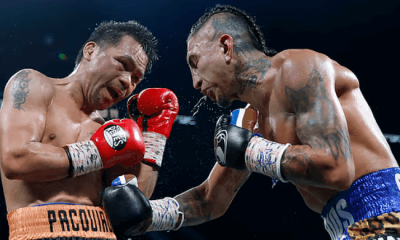
 Featured Articles2 weeks ago
Featured Articles2 weeks agoManny Pacquiao and Mario Barrios Fight to a Draw; Fundora stops Tim Tszyu
-

 Featured Articles3 weeks ago
Featured Articles3 weeks agoPhiladelphia Welterweight Gil Turner, a Phenom, Now Rests in an Unmarked Grave
-
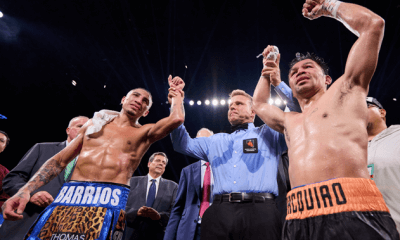
 Featured Articles2 weeks ago
Featured Articles2 weeks agoArne’s Almanac: Pacquiao-Barrios Redux
-

 Featured Articles4 weeks ago
Featured Articles4 weeks agoCatterall vs Eubank Ends Prematurely; Catterall Wins a Technical Decision


